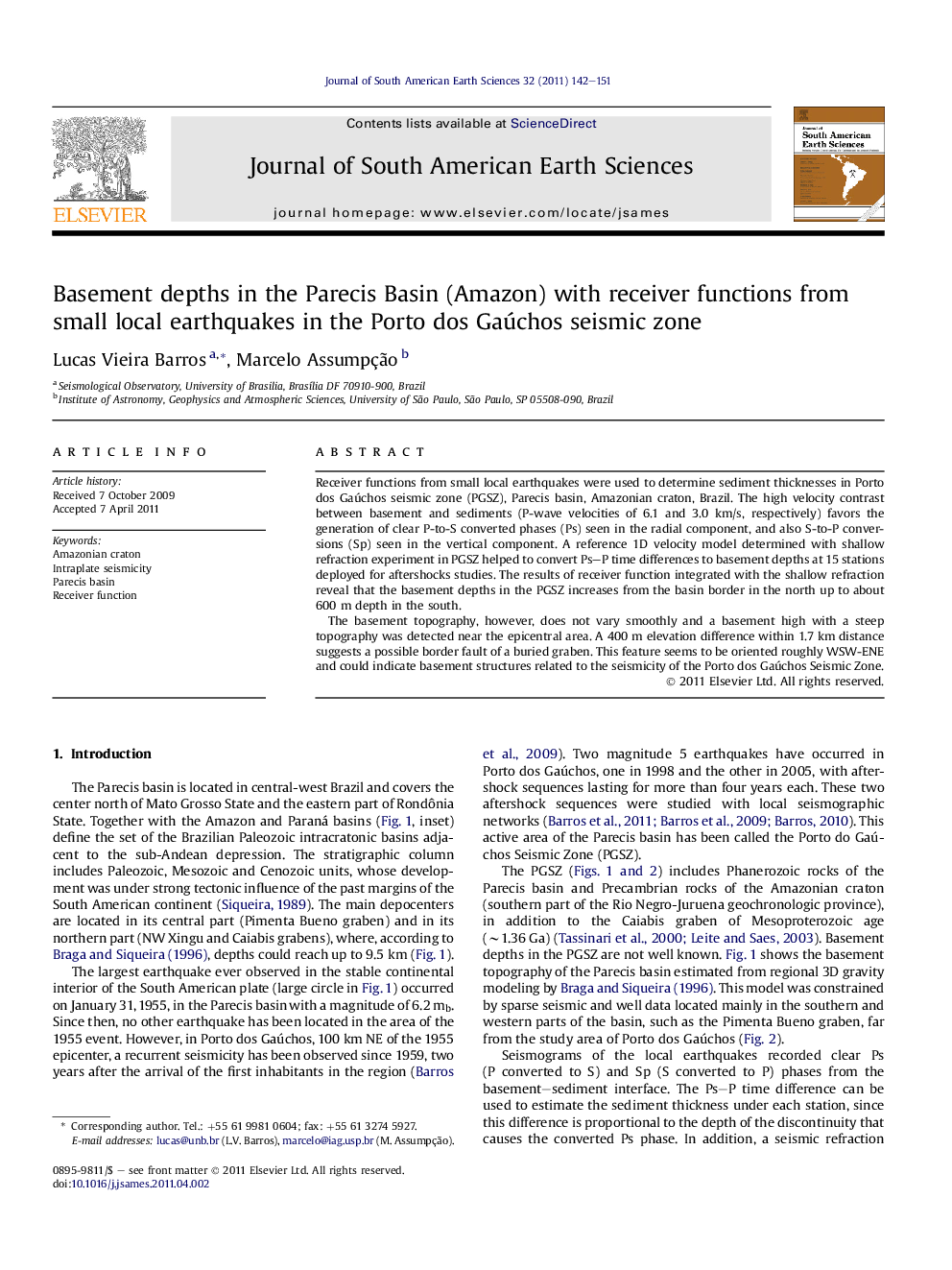| Article ID | Journal | Published Year | Pages | File Type |
|---|---|---|---|---|
| 6431512 | Journal of South American Earth Sciences | 2011 | 10 Pages |
Receiver functions from small local earthquakes were used to determine sediment thicknesses in Porto dos Gaúchos seismic zone (PGSZ), Parecis basin, Amazonian craton, Brazil. The high velocity contrast between basement and sediments (P-wave velocities of 6.1 and 3.0Â km/s, respectively) favors the generation of clear P-to-S converted phases (Ps) seen in the radial component, and also S-to-P conversions (Sp) seen in the vertical component. A reference 1D velocity model determined with shallow refraction experiment in PGSZ helped to convert Ps-P time differences to basement depths at 15 stations deployed for aftershocks studies. The results of receiver function integrated with the shallow refraction reveal that the basement depths in the PGSZ increases from the basin border in the north up to about 600Â m depth in the south.The basement topography, however, does not vary smoothly and a basement high with a steep topography was detected near the epicentral area. A 400Â m elevation difference within 1.7Â km distance suggests a possible border fault of a buried graben. This feature seems to be oriented roughly WSW-ENE and could indicate basement structures related to the seismicity of the Porto dos Gaúchos Seismic Zone.
⺠The large velocity contrast between sediments and basement rocks produces strong conversions of P-to-S waves (Ps). ⺠Ps waves from local earthquakes were used to estimate sediment thickness in the Parecis Basin of the Amazon craton. ⺠This new technique allowed the discovery of a basement scarp, which is probably related to seismogenesis of the present seismic activity in the area.
